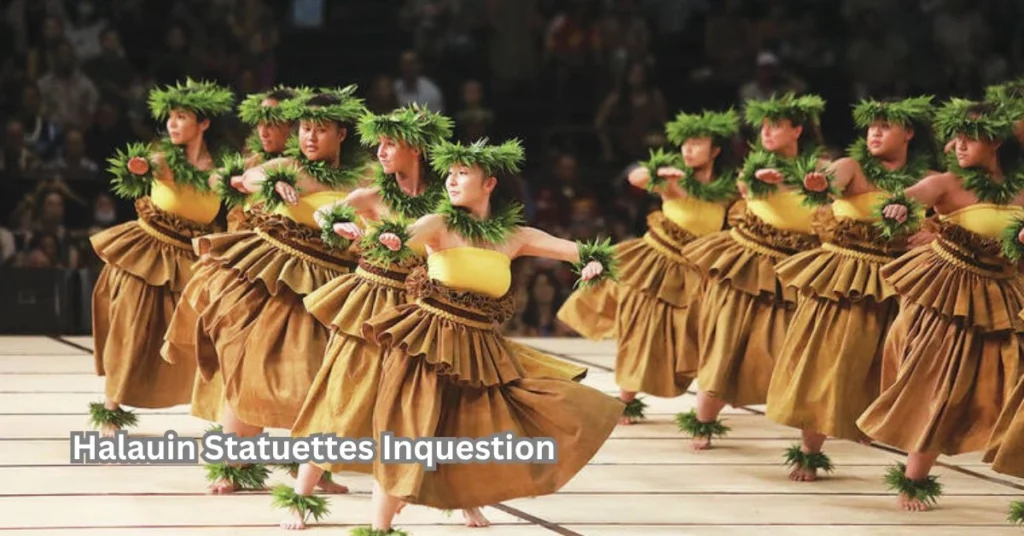The allure of art often lies in its mysteries, and few pieces spark intrigue quite like the Halauin statuettes. These captivating artifacts whisper stories from the past, yet their true origins remain shrouded in uncertainty. As collectors and enthusiasts alike delve into their fascinating history, they encounter an array of questions about authenticity, creation methods, and symbolic meaning. Join us on a journey to uncover not just the beauty of these statuettes but also the enigma that surrounds them. Buckle up as we explore what makes Halauin statuettes so uniquely compelling!
The Fascinating History of Halauin Statuettes
The Halauin statuettes trace their origins back to an ancient civilization, thriving in a secluded region known for its rich cultural heritage. These artifacts were often crafted for ceremonial purposes, believed to embody the spirits of ancestors or deities.
Throughout history, trade routes helped spread these statuettes beyond their homeland. As explorers encountered them, tales of their mystical powers grew. They became sought-after treasures among collectors and museums worldwide.
Interestingly, each statuette tells a story through intricate designs and varying materials. This artistry reflects the craftsmanship of skilled artisans who poured meaning into every detail.
Today, they hold not only aesthetic value but also serve as a portal into understanding the beliefs and practices of past societies. With each piece discovered, we glean more about our shared human experience across time and distance.
The Controversy Surrounding the Authenticity of Halauin Statuettes
The world of Halauin statuettes is shrouded in intrigue, largely due to the ongoing debate over their authenticity. Many art enthusiasts and historians have raised concerns about the origins of these pieces.
Some argue that numerous replicas are flooding the market, blurring the lines between genuine artifacts and reproductions. This has led collectors to question what they are truly acquiring when they buy a Halauin statuette.
Experts often point to inconsistencies in materials and craftsmanship among different pieces as evidence of this controversy. The varying quality raises red flags for those who study these artifacts closely.
Additionally, the lack of comprehensive documentation further complicates matters. Without proper provenance, it becomes challenging to confirm whether a piece is an authentic Halauin or just another imitation disguised as art.
This clouded landscape fuels discussions about conservation ethics and cultural heritage preservation within artistic communities worldwide.
Methods Used to Create Halauin Statuettes
The creation of Halauin statuettes is a meticulous process steeped in tradition. Artisans begin by sourcing locally available materials, often favoring clay and stone for their durability and texture.
Once the material is selected, they shape it using hand tools that have been passed down through generations. This hands-on approach allows each artist to infuse their personality into every piece.
After shaping, intricate designs are carved or painted onto the surface. These details add both aesthetic appeal and cultural significance.
Firing techniques vary widely based on regional practices—some artisans employ open fires while others use kilns for precise temperature control. This step solidifies the statuette’s structure.
Finishes such as glazes or natural oils enhance color vibrancy and protect against wear over time. Each method contributes to the unique character of Halauin statuettes, making them captivating works of art that tell a story beyond mere decoration.
The Significance and Symbolism Behind Each Statuette
Each Halauin statuette carries a narrative, rich with meaning. Crafted meticulously, they reflect the culture from which they originate. These figures often embody deities or significant ancestral spirits.
The materials used also tell a story. Clay and wood are common, symbolizing the connection to earth and nature. The colors chosen have their own significance too—reds can signify vitality while blues may represent tranquility.
Every detail matters; from facial expressions to body posture, each element is intentional. A raised hand might denote blessing or protection, while crossed arms could suggest contemplation or strength.
These statuettes serve more than decorative purposes; they act as conduits of spiritual beliefs and cultural heritage. Owning one means holding a piece of history that connects generations past with those present today.
Famous Collections and Exhibits Featuring Halauin Statuettes
One of the most renowned collections of Halauin statuettes can be found at the Museum of Ancient Cultures. This exhibit showcases an impressive array, highlighting their intricate craftsmanship and historical significance.
Another notable collection resides in the National Art Gallery, where experts frequently host special events to discuss their importance. These discussions often draw large crowds, eager to learn about each piece’s story.
In addition to museums, private collectors occasionally open their doors for exclusive viewings. These intimate gatherings provide enthusiasts a chance to appreciate these unique statuettes up close.
Traveling exhibitions also spotlight Halauin artistry around the globe. Each stop introduces new audiences to this captivating form of expression, igniting interest and fostering appreciation among diverse communities.
Debunking Myths and Misconceptions about Halauin Statuettes
Many myths surround Halauin statuettes, often clouding their true significance. One common misconception is that these figurines were solely decorative. In reality, they served a deeper purpose, often tied to rituals and cultural practices.
Another myth suggests that all Halauin statuettes are made from the same material. This is misleading; artisans used various mediums like wood, clay, and stone depending on the era and region.
Some believe these statuettes have supernatural powers or can bring good luck. While many cultures imbued their creations with spiritual meaning, attributing magical abilities to them oversimplifies their cultural context.
There’s a notion that all Halauin statuettes are ancient relics. However, contemporary artists still create new interpretations inspired by traditional designs. This ongoing evolution keeps the art form vibrant and relevant today.
Conclusion: Appreciating the Beauty
The allure of Halauin statuettes is undeniable. Each piece tells a story, woven from the threads of culture and history. The craftsmanship behind these statuettes showcases incredible talent and creativity.
As we delve into their significance, we uncover layers of meaning embedded within each figure. From spiritual representations to historical narratives, every statuette serves as a window into its time and place.
Exploring famous collections brings excitement to collectors and enthusiasts alike. Institutions around the world display these works, inviting admiration and reflection on their cultural impact.
While myths may cloud perceptions of Halauin statuettes, separating fact from fiction allows for a deeper appreciation of their artistry. Understanding what makes each piece unique fosters respect for the creators who brought them to life.
Recognizing the beauty in Halauin statuettes enriches our connection with art. This journey through mystery inspires curiosity while celebrating human expression across generations.
Learn more about Adrianna Apostolec’s remarkable journey in our previous article.







